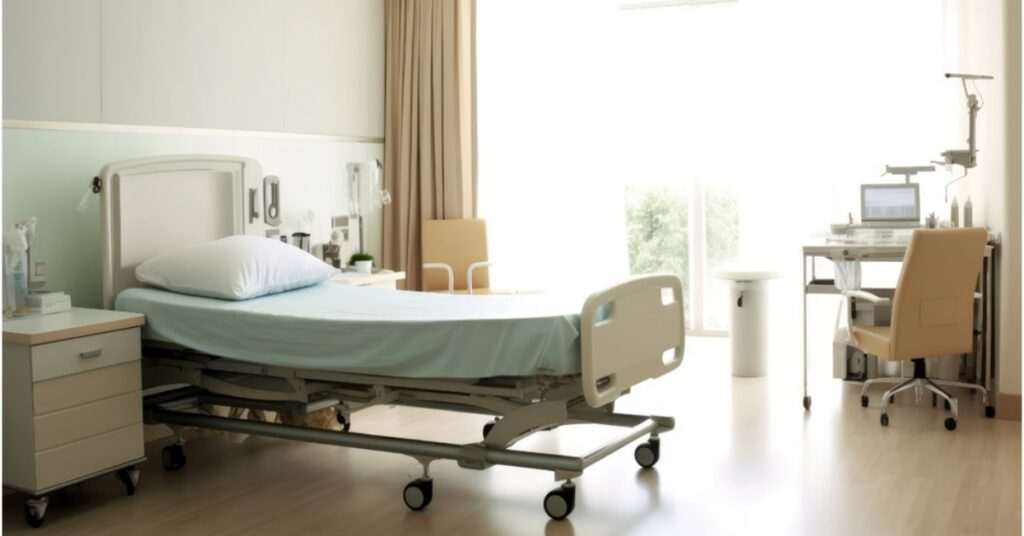Saving lives is possible if appropriate and quality medical equipment are available. Hospitals depend on such tools daily to provide excellent patient care. With the right equipment, medical personnel can handle various health conditions
Provide Comprehensive Health Care
Various tools are crucial for the provision of complete medical care. Such equipment assists healthcare providers in diagnosing, treating, and monitoring their patients. It is necessary for the day-to-day functioning of hospitals and ensures that patients receive the care they require to get better. Every hospital needs essential equipment to deliver quality medical care. Sourcing essential tools for health facilities can be overwhelming. It requires paying attention to details and careful consideration to purchase superior-quality and reliable products that satisfy your hospital’s unique needs. You can acquire medical equipment from different sources, including manufacturers, distributors, and online marketplaces. A hassle-free option is to get a med cart from online platforms selling medical equipment.
Essential Equipment Required by Hospitals
Health facilities need essential tools for operational efficiency and to support proper patient care. From stethoscopes to ultrasound and X-ray machines, the equipment is crucial to the provision of comprehensive healthcare. Here are tools that medical personnel commonly use to ensure patients’ well-being.
Thermometers
Health professionals use clinical thermometers to determine patients’ body temperatures accurately. Measuring this body function is helpful in monitoring or detecting health issues. Thermometers enable diagnosis of fever or other illnesses if the body temperature exceeds 380C. A healthy adult’s body temperature ranges between 36.50C to 37.20C. You can measure temperature at the following body areas:
- Armpit (axillary)
- Mouth (orally)
- Ear (tympanic)
- Forehead (temporal)
Weighing Scale
Hospitals use balances or scales to measure body weight. Most hospitals use flat or floor scales. Patients who step on the device’s flat surface will view their weight on the attached display. Health facilities also use baby scales, bed weighing scales, and chair scales. These tools measure weight in kilograms or pounds.
Sphygmomanometer
This device measures blood pressure. It consists of an inflatable cuff attached to a pressure measuring apparatus, which shows recordings on a dial or as a mercury column’s height. A healthcare provider wraps the cuff around a patient’s upper arm, inflating it to block blood flow in the artery. The professional presses a stethoscope on the skin at the crook of the patient’s arm. The physician or nurse then listens to blood flow through the artery while deflating the cuff. The device’s gauge records the sounds as the systolic (first) and diastolic (last) pressure. Automatic blood pressure measurement doesn’t require using a stethoscope.
Stethoscope
Healthcare providers use a stethoscope to listen to sounds generated inside the body by blood flow, intestines, lungs, and heart. It is an essential tool for patients’ physical examination. Modern stethoscopes amplify internal body sounds and block external noise using noise-canceling technology. Besides, they can electronically save data.
Hospital Stretchers
During emergencies, stretchers are indispensable. This equipment helps move patients in a hospital. Stretchers are also used in neonatal care and for trauma treatment. They have a platform fixed to a wheeled structure. Trauma stretchers include a hydraulic application and are larger than the emergency versions. Besides, many stretchers have patient monitors and intravenous poles attached to them.
Sterilizers
Killing microorganisms on medical items is necessary to prevent healthcare-related infections. Hospitals use autoclaves to sterilize surgical tools, medical supplies, and other items. This equipment uses saturated steam at high pressure to eliminate microbial life. Sterilizers are available in various sizes, allowing you to choose a suitable option for your health facility.
Syringe Pump
It is a perfect device for accurately administering or withdrawing a specific amount of fluid from a patient. This tool’s capacity is less than that of an infusion pump. Syringe pumps are ideal for infusing medications required in small hourly quantities. They can also be used to administer intravenous medicines, especially if a drug needs to be infused gradually for some minutes.
X-ray Machine
Radiographers use X-rays (electromagnetic radiation) to generate images that are helpful to physicians when diagnosing patients. A radiographer positions the part of a patient’s body to be examined between the X-ray film and the machine. The professional then uses a lead apron to shield other parts of the body. An X-ray beam focused on the area under examination captures images of internal organs and tissues as shadows on a computer system or film.
Electrocardiogram (ECG) Machine
This machine helps doctors determine a patient’s heart’s functioning. By recording the organ’s electrical activity, physicians can monitor the heart rhythm over a given period and detect abnormalities. The tool consists of electrodes attached to a patient’s skin to capture electrical signals during the examination.
Ultrasound Machine
The tool helps health professionals to use imaging techniques to diagnose patients accurately. It directs high-frequency sound waves to the body part under examination, and recording the echoes generates an image of the internal structure. Gynecologists also use ultrasound to monitor unborn babies.
Facilitate Quality Healthcare
The availability of essential equipment in hospitals makes a significant difference in saving people’s lives. Conducting careful research will help you purchase quality and reliable tools to provide excellent healthcare. Regular maintenance and asset monitoring will also help keep the equipment in good condition and ensure operational efficiency.







